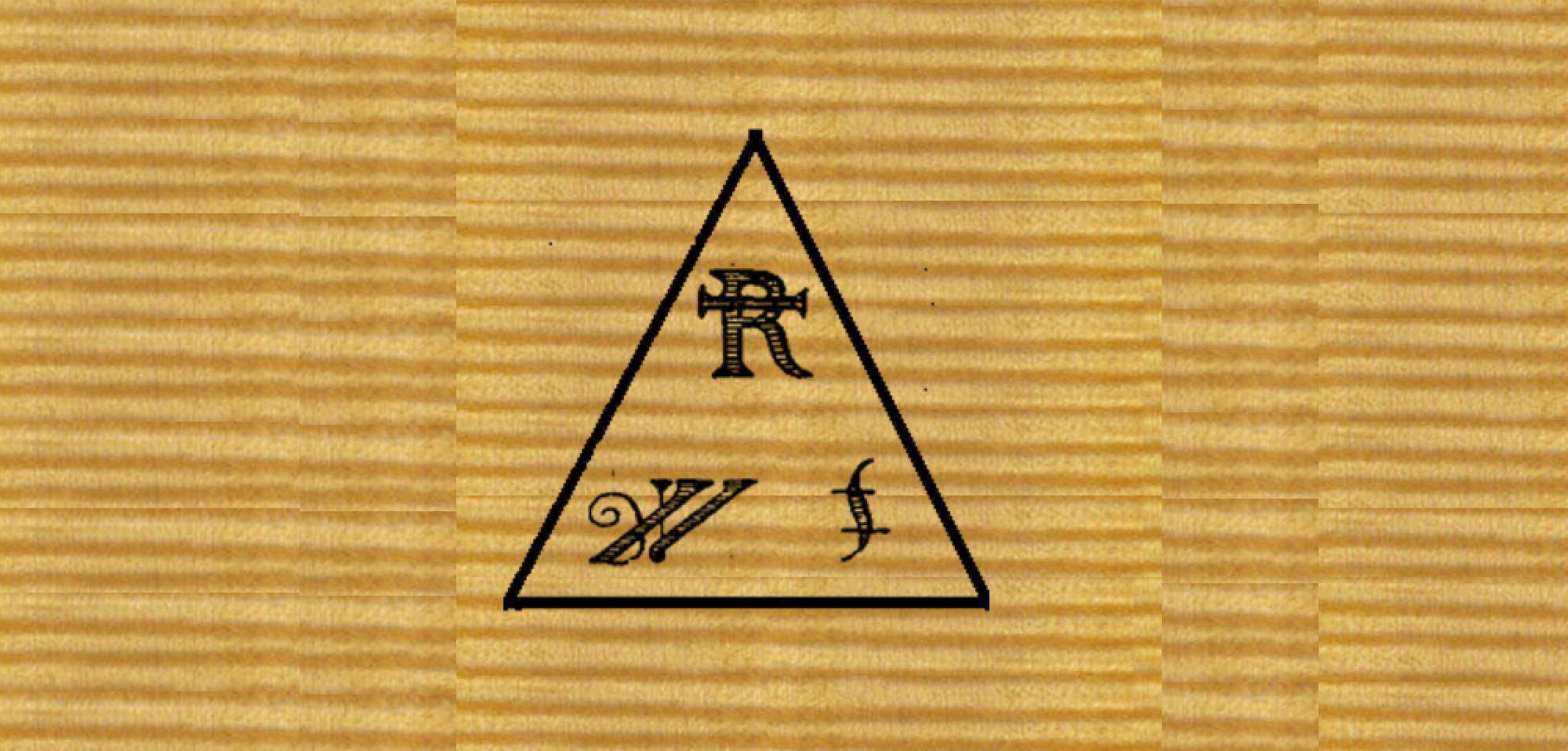Violin Varnish Ltd.
Varnish System Overview
Aged Wood Colors: Red Brown, Gold, & Gray/Green
Whether the instrument being varnished is to be an antique finish, shaded, or fully varnished, most makers want a colored wood background for their varnishing. The color of the wood under the varnish in classic Italian instruments is largely the result of wood aging under the varnish. As the wood ages it exhibits three color changes: Red Brown, Gold, and Gray/Green. As the spruce is exposed to ultra-violet light the resinous materials harden and exhibit a red brown color. The same is true of the sugars in the maple. Tannic acid in both wood species is released and adds to this coloration. Hemi-cellulose is photo-chemically reactive to the blue-purple spectrum of visible light. This reaction results in a gold color. As this gold color decomposes it produces and gray/green tone. The gray/green is enhanced in heavily worn areas as a result of exposure to humidity and the abuse of the worn surfaces. The Aged Wood Colors are alcohol soluble vegetable extractions which are enhanced by the addition of a mild [pine bark based] mordant which fixes the color in the wood. These colors can be used independently or with the Balsam Ground System. Using the Aged Wood Colors the maker has complete control of the color of the wood under the varnish.
Balsam Ground System: Four Balsam Extracts & Balsam Ground Varnish
The finest classical instruments are set apart by the quality of their ground. This material is an excellent sealing and protective application which allows highly colored varnish to be applied without staining the wood underneath it. This ground has a remarkably deep sparkle which comes from light being reflected within the wood structure and then through the varnish. The Balsam Ground System reproduces all of these qualities. The ground is made from the raw sap as it is harvested from the pine, spruce, and hemlock trees. In the wood, this material will harden with age naturally. However in order to make the process dry in a predictable and controllable way the raw resin is fractured into its components [much as raw petroleum is “cracked” into its various components]. When these components are applied one on top of the other they act to dry one another in a way that mimics the ageing process of these resinous materials in the wood. The first two balsams enhance the colors and contrasts natural to the wood and open the cell structure to receive the remaining balsam extracts. The third and fourth balsam extracts produce the deep, three dimensional reflectivity of the classic Cremonese ground. The final step is the application of the Balsam Ground Varnish which is made from the same raw balsams cooked with a small amount of linseed oil to produce a very tough varnish which does not build thickness as it is applied. It is also the final drier for the whole system.
Varnish & Color: Translucent Color
Classic Cremonese varnish, as it proceeds from Amati, is a combination of linseed oil, resin, and turpentine. This highly colored translucent film allows all the reflectivity and detail of the wood and ground to show through the varnish. To color the varnish in this way the color is created as a lake, which, rather than being a floating particle [which limits transparency], is attached to the linseed oil molecule producing a highly colored, yet translucent varnish. Using alizarin as a color source a spectrum of highly charged, individually colored varnishes are created [Alizarin Orange, Scarlet, Purple, and Dark Rose]. These can be mixed into a clear varnish for color which is created by the varnisher. When this method is applied to madder root as the source of colorant, combined with Greek Pitch a series of highly colored, yet complex colors are created [Marrone, Arrancione, Rose, and Gold]. The Greek Pitch Varnishes are reproductions in materials and cooking methods of the original Cremonese varnish. Pigments may be added to these varnishes to steer or intensify the color. Only a small amount of pigment is necessary. This preserves the translucent nature of the varnish.
